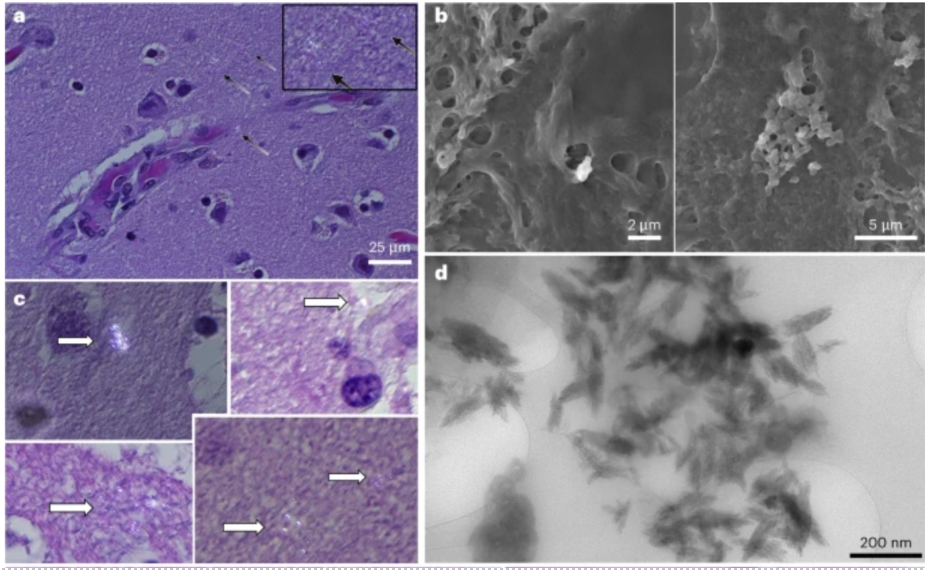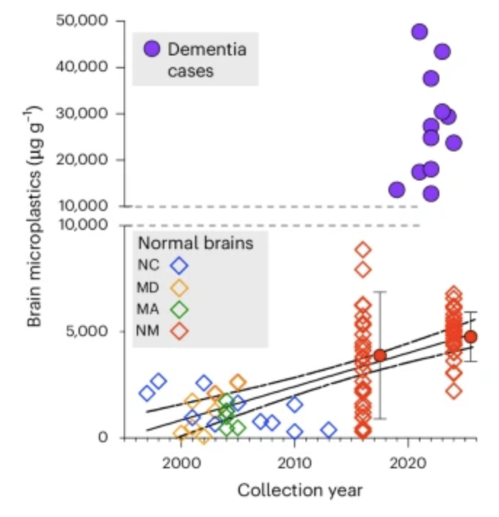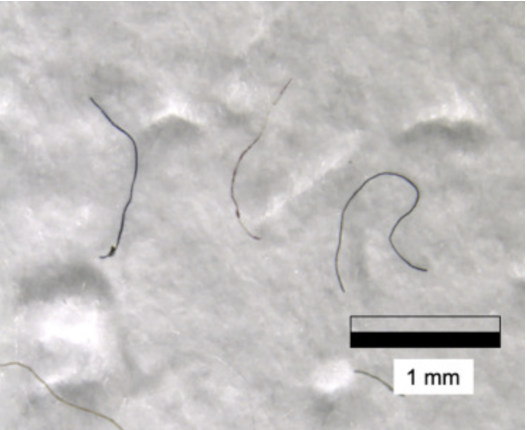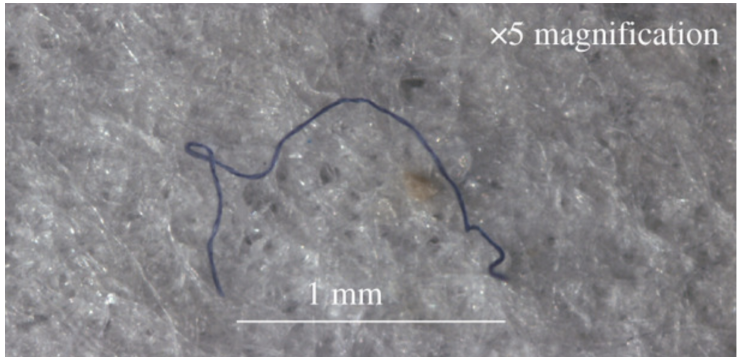MICROPLASTICS
August 4, 2025
From the Bottom of the Ocean to the Top of Mountains, Here Are the Strangest Places Microplastics Have Been Found.
The Mariana Trench, Mount Everest, Hedgehogs, the Human Brain, and more. These tiny plastic particles are turning up in places you’d never expect, and they’re not going away.
Of All the Places...
You might expect to find plastic in a landfill or floating on a beach. But would you expect it inside your brain? How about in the snow on Mount Everest, or deep beneath the ocean in the Mariana Trench? Microplastics, tiny plastic particles less than five millimeters in size (smaller than a grain of salt), have spread farther than anyone imagined. They ride the wind, drift through water, and sneak into food chains. Keep reading to discover some of the strangest and most surprising places scientists have found them.
Inside the Human Brain
In a 2024 study published in Nature Medicine, researchers analyzed brain tissue from people who had passed away and found microplastics in every single sample they tested. Using a technique called pyrolysis–gas chromatography–mass spectrometry, they measured just how much plastic was present in the brain’s frontal cortex. The results were striking. In normal brain tissue, the concentration of microplastics has risen sharply over time, from near-zero in the 1990s to an average of nearly 5,000 micrograms per gram in 2024. But even more concerning were the levels found in individuals diagnosed with dementia. Those brains showed plastic concentrations four to eight times higher than normal, sometimes reaching over 40,000 micrograms per gram. Researchers identified particles from common consumer plastics like PET (used in drink bottles), nylon (like your favorite athletic clothing), and PVC. These materials appear to cross the blood–brain barrier, most likely through inhalation or ingestion.
Figure 1: Microscopy images showing tiny plastic particles (bright spots and flakes) found in human brain tissue. More were seen in people with dementia, especially near blood vessels and immune cells. (Nihart et al., 2025) https://doi.org/10.1038/s41591-024-03453-1
Figure 2: Microplastics in micrograms found in brains with dementia (top) and normal brains (bottom). (Nihart et al., 2025) https://doi.org/10.1038/s41591-024-03453-1
Snow on the Summit
In 2020, researchers climbed to the world’s highest peak and discovered something no one expected... microplastics in freshly fallen snow on Mount Everest. Samples collected from just below the summit revealed plastic fibers at altitudes over 8,000 meters, where oxygen is thin and few people dare to tread. The team, published in One Earth, found an average of 30 microplastic particles per liter of snow, the majority of which consisted of polyester (56%) and acrylic (31%). De Falco et al. estimated that these particles were a direct consequence of wearing clothes made with microplastics, noting how a majority of technical clothing and gear used by hikers and climbers on the mountain were made with these synthetic materials.
Figure 3: A selection of microfibers found in snow samples from Mt. Everest Balcony (8,440 m), which are consistent with fibers from outdoor clothing. (Napper et al., 2020) https://doi.org/10.1016/j.jfca.2025.107719
At the Bottom of the Ocean
Miles beneath the waves, in one of the most remote and extreme environments on Earth, scientists have found microplastics inside deep-sea creatures from the Mariana Trench. In 2018, researchers collected amphipods, small shrimp-like animals, from depths over 10,000 meters and discovered synthetic fibers in every single specimen. Published in Royal Society Open Science, the study revealed that even the ocean’s deepest corners have fibers likely coming from fishing gear, plastic waste, and textile shed that had broken down and drifted into the trench over time.
Figure 4: A microfiber found within an amphipod from 10,890 m deep in the Mariana Trench. (Jamieson et al., 2019) https://doi.org/10.1098/rsos.180667
Plastic in... Hedgehogs?
In 2022, researchers set out to investigate whether small animals were ingesting plastic by collecting and analyzing droppings from 261 wild mammals across the United Kingdom. To gather the data, researchers used humane aluminum traps baited with peanut butter, seeds, and carrots to tempt hungry hedgehogs after dark. After collecting nearly 200 droppings from European hedgehogs, the team released the animals unharmed, keeping the dropping samples to analyze. Using a method that identifies plastic based on how they interact with infrared light, the scientists’ analysis revealed that 19 percent of hedgehog dropping samples contained microplastics, most of them smaller than one millimeter. Just like the research from Mt. Everest, polyester was the most common microplastic found, a typical textile used in clothing likely introduced into the environment through sewage sludge or airborne fibers.
Figure 5: Erinaceus europaeus, the European hedgehog species analyzed in the study. https://www.worldlandtrust.org/species/mammals/european-hedgehog/
Should You Be Concerned?
Although we do not yet fully understand the health effects of consuming microplastics, research has already linked them to inflammation, hormone disruption, and the potential to carry toxic chemicals into the body. These concerns are especially relevant when microplastics break down into even smaller particles, called nanoplastics, which can enter organs and tissues more easily.
How You Can Help
Microplastics are appearing in some of the most unexpected corners of the natural world, from the highest peaks to the lowest depths of our Earth. But it doesn't have to be this way. Research has shown that laundry machines are the leading source of microplastic pollution. CLEANR’s Premium Microplastic Filter for washing machines captures 90%+ of microplastics from the laundry, preventing them from entering our environment.
About CLEANR
CLEANR builds best-in-class microplastic filters for washing machines that effortlessly remove the largest source of microplastics into the environment. Its technology, VORTX, represents a breakthrough in filtration, with a patented design that is inspired by nature and proven to outperform conventional filtration technologies by over 300%. The company is building a platform filter technology that enables product manufacturers and business customers to materially reduce their microplastic emissions from impacted in-bound and out-bound fluid streams, including residential and commercial washing machine wastewater, in-home water systems, wastewater treatment, textile manufacturing effluents, industrial wastewater, and other sources. www.cleanr.life
Sources:
Nihart, A. J., Garcia, M. A., El Hayek, E., Liu, R., Olewine, M., Kingston, J. D., Castillo, E. F., Gullapalli, R. R., Howard, T., Bleske, B., Scott, J., Gonzalez-Estrella, J., Gross, J. M., Spilde, M., Adolphi, N. L., Gallego, D. F., Jarrell, H. S., Dvorscak, G., Zuluaga-Ruiz, M. E., West, A. B., & Campen, M. J. (2025). Bioaccumulation of microplastics in decedent human brains. Nature Medicine, 31, 1114–1119. https://doi.org/10.1038/s41591-024-03453-1
Napper, I.E., Davies, B.F.R., Clifford, H., Elvin, S., Koldewey, H.J., Mayewski, P.A., Miner, K.R., Potocki, M., Elmore, A.C. & Thompson, R.C. (2020). Reaching New Heights in Plastic Pollution – Preliminary Findings of Microplastics on Mount Everest. One Earth, 3(5), 621–630. https://doi.org/10.1016/j.oneear.2020.10.020
Jamieson, A.J., Brooks, L.S.R., Reid, W.D.K., Piertney, S.B., Narayanaswamy, B.E., & Linley, T.D. (2019). Microplastic and synthetic particles ingested by deep-sea amphipods in six of the deepest marine ecosystems on Earth. Royal Society Open Science, 6(2), 180667. https://doi.org/10.1098/rsos.180667
Reynolds, S. J., Smith, J. A., et al. (2022). Microplastics in faecal samples of terrestrial small mammals in the United Kingdom. Science of The Total Environment, 856(Pt 1), 159132. https://doi.org/10.1016/j.scitotenv.2022.159132
Ullah, S., Ahmad, S., Guo, X., Ullah, S., Ullah, S., Nabi, G., & Wanghe, K. (2023, January 16). A review of the endocrine disrupting effects of micro and nano plastic and their associated chemicals in mammals. Frontiers in Endocrinology, 13, 1084236. https://doi.org/10.3389/fendo.2022.1084236
More on Microplastics
MICROPLASTICS
February 3, 2023
Microplastics Revealed in the Placentas of Unborn Babies.
All 10 placentas from a study contained microplastics.
MICROPLASTICS
December 12, 2022
How do Microplastics and Microfibers Enter the Environment?
Washing machines are the largest source of microplastic pollution.
MICROPLASTICS
March 11, 2019
Microplastics Found in Human Breast Milk for the First Time.
Studies find microplastics in breast milk, raising concerns about the effects of microplastics on human infants.












